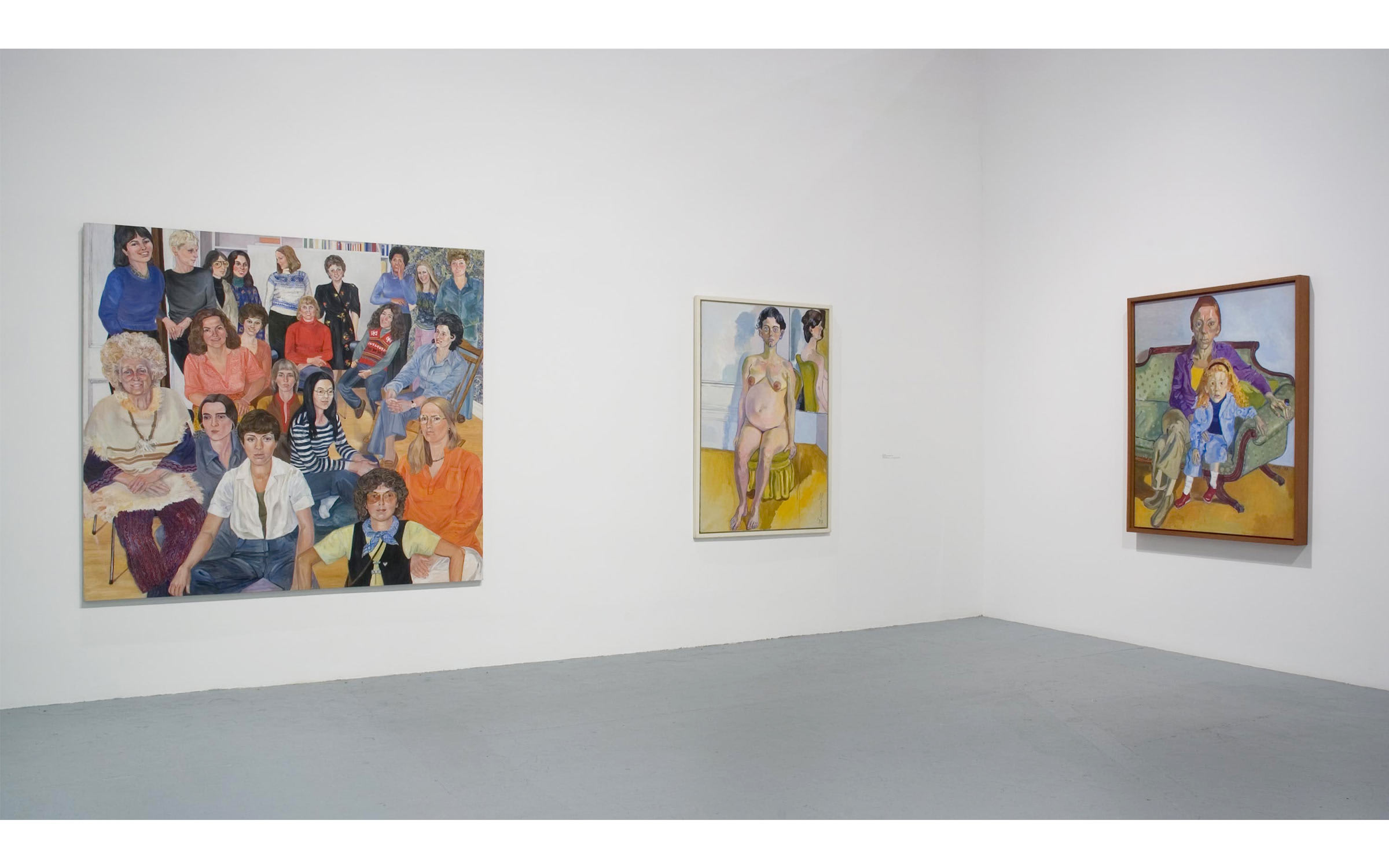Connectez-vous et inscrivez-vous pour recevoir la newsletter Art Basel Stories
As a curator who has organized dozens of women-only exhibitions, I have been asked about their relevance innumerable times throughout my career. Do these shows give women a visibility that will lead to their fuller integration within a broader discourse? Do they address, and possibly assist in, correcting the gender inequity in the artworld? Or, rather, do these exhibitions position women as outsiders, separate, and forever unequal? Curator Roger Malbert summed up that position when he asked art historian Linda Nochlin and me during the research for our ‘Global Feminisms’ exhibition (Brooklyn Museum, 2007), ‘Aren’t women-only exhibitions a bit retardataire, given women’s visibility on the art scene in general?’
Frankly, I find these questions to be ill-informed.
First, and importantly, women artists are still woefully underrepresented in all aspects of the artworld, be it gallery representation, museum shows, directorships, press coverage, auction prices, or permanent-collection displays. The existence of a few token superstars – Cindy Sherman, Marlene Dumas, Tracey Emin – does not mean that women have achieved equality in the artworld. As I’ve repeatedly highlighted in my publications – and most recently in my book Curatorial Activism: Towards an Ethics of Curating (2018) – women comprise circa 65% of the art-school population, yet they make up only 32% of artists represented by commercial art galleries in the US. MoMA’s permanent-collection display is 12% women; the Metropolitan Museum of Art’s is 4%. The auction-price differential between living female and male artists is 1 to 7 – for dead artists it’s worse: 1 to 10. Clearly, there is a systemic, structural problem, with male artists being valued over females. What’s more, our society seems to be engaged in a kind of historical or cultural amnesia when it comes to women’s achievements. Men’s successes have no trouble becoming inscribed into history. Indeed, one could argue that most exhibitions, especially historical ones, are male-only exhibitions, with a few women scattered about. Yet, no one seems to be querying the relevance of these shows.
Women-only exhibitions aim to address these undeniable disparities by giving women a unique platform to showcase their work. In the case of historic exhibitions such as ‘Women Artists: 1550-1950’ (Los Angeles County Museum of Art, 1976), these function as what I call ‘curatorial correctives’ to the occlusion of women as cultural contributors from the larger art-historical record. Women-only historic shows challenge the masculine assumptions of the sacred canon of art history by reclaiming women artists and inserting them back into a narrative from which they have become lost, forgotten, or simply dismissed as insignificant because they are female.
It’s important to remember that the debate around women-only exhibitions has recurred repeatedly since the 1960s, when artists from the women’s, black, and queer communities first sought to present their work independently because they believed (rightly so) they were not getting fair and adequate representation in the mainstream masculinist artworld. Back in 1971, critic and curator Lucy Lippard was challenged for her curatorial position in the wake of her exhibition ‘26 Contemporary Women Artists’ at The Aldrich Museum of Contemporary Art in Ridgefield, Connecticut. Her response is as pertinent today as it was then: ‘The show itself, of course, is about art. The restriction to women’s art has its obvious polemic source, but as a framework within which to exhibit good art, it is no more restrictive than, say, exhibitions on German, Cubist, black and white, soft, young, or new art.’ In other words, could we not think of these exhibitions as simply curatorial frameworks meant to organize the artworks on display?
Many women-only shows have also revived or jump-started careers. ‘Women of Abstract Expressionism’ (Denver Art Museum, 2016), ‘Wack!: Art and the Feminist Revolution’ (Museum of Contemporary Art, Los Angeles, 2007), and ‘elles@centrepompidou’ (Centre Pompidou, Paris, 2009) all spotlighted virtual unknowns alongside artists who had managed to break through the barriers. Others, such as ‘Global Feminisms’ or ‘Radical Women: Latin American Art, 1960-1985’ (Hammer Museum, Los Angeles, 2017), brought many non-western women artists to audiences in the US for the first time. All of these exhibitions have expanded modern and contemporary art discourse by introducing new names, new narratives, and unseen work. In many instances, these exhibitions resulted in gallery representation for artists who had not yet achieved commercial recognition. These exhibitions also demonstrated that there are still issues specific to women that need to be highlighted, especially concerning women living and working outside Euro-America, where the plight of women is far greater – and where their status is often less secure.
While I yearn for a moment when there is no longer a need for women-only exhibitions, we are not there yet (just as we are not with all artists from marginalized communities). This kind of project will remain necessary until we reach parity in representation and visibility. What other choice do we have at present? Given the alt-right conservatism ushered in by Donald Trump’s presidency – and an administration hostile to women’s and minority rights – I believe that these exhibitions are crucial, perhaps more than ever.

Maura Reilly is an arts writer and curator. Her most recent book, Curatorial Activism: Towards an Ethics of Curating (2018), was named by The New York Times as one of the ‘Best Art Books of 2018’. She received her M.A. and PhD from the Institute of Fine Arts at New York University.
Reilly was in conversation with Billie Zangewa and Cecilia Fajardo-Hill during Art Basel Miami Beach’s 2018 Conversation ‘Feminism – The Global View’. You can watch the full talk here.
Top image: detail from an installation view of ‘Radical Women: Latin American Art, 1960-1985’, Brooklyn Museum, New York City, April 13–July 22, 2018. Photo by Jonathan Dorado, Brooklyn Museum.

